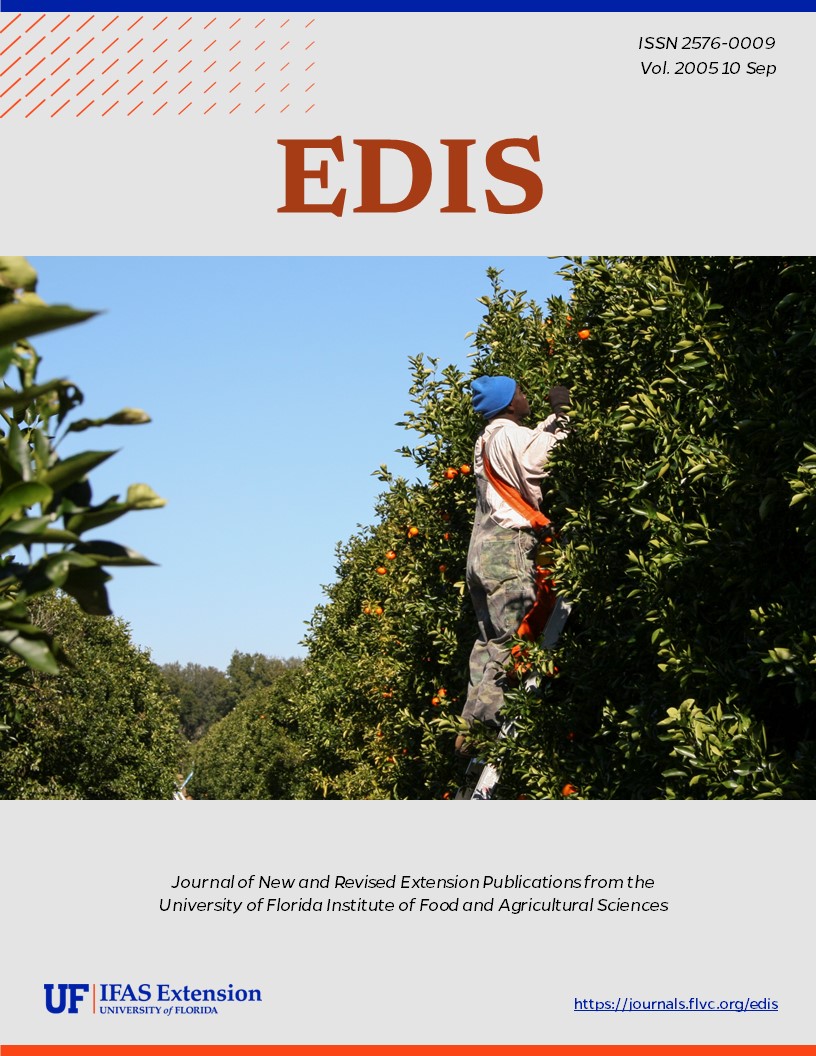Abstract
Phytophthora species are important soil-borne fungal pathogens worldwide that attack the root systems, trunks, and fruit of citrus trees at any age. Historical reports from Florida indicated Phytophthora was a problem as early as 1876 on sweet orange seedlings. When roots or tree trunks are affected, the foliage turns yellow and exhibits poor growth, leaves drop, twigs die back, and fruit size and yield are reduced. As fungal infection of roots and bark progress, the above-ground symptoms increase in severity. Ultimately, trees may decline and die. These symptoms result from the inability of the tree's fibrous roots to take up nutrients and water from the soil, as well as blockage of movement to the tree's canopy via lateral roots and the trunk. The movement of photosynthates 'downward' is also impaired. The two main species of Phytophthora in Florida are P. nicotianae and P. palmivora. Populations of either Phytophthora spp. in the soil may increase by repeated infection of fibrous roots resulting in rapid reproduction under conditions of high moisture and warm temperatures (75-90°F). This document is HS-1015, one of a series of the Horticultural Sciences Department, Florida Cooperative Extension Service, Institute of Food and Agricultural Sciences, University of Florida. Original publication date May 2005.
HS-1015/HS261: Field Diagnosis and Management of Phytophthora Diseases (ufl.edu)

